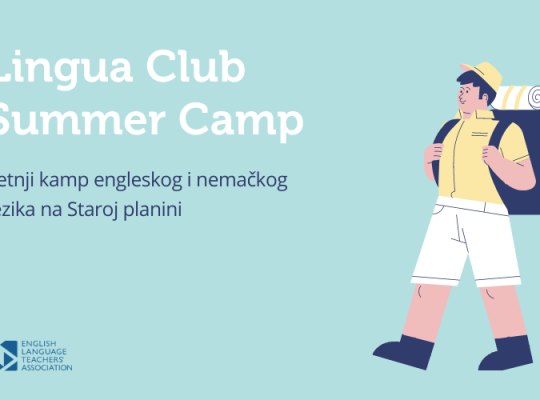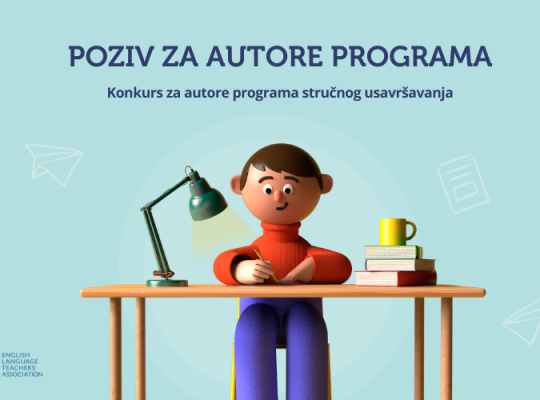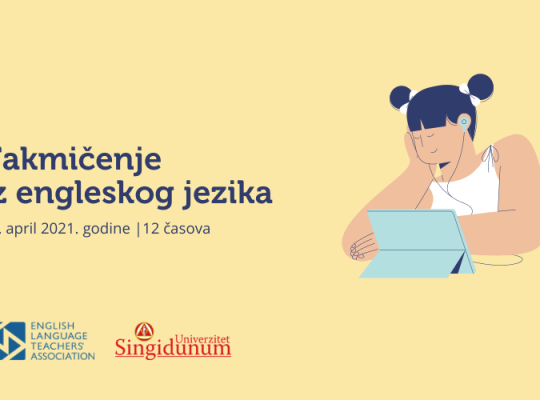There can never be enough speaking or creative writing activities in an ESL classroom, and this post will focus on easy activities you can apply in your classroom to promote productive skills with no prep!
ELTA Serbia is a partner with different associations in Europe, and one of them is the Eurolingva Examination Center which has been offering a wide variety of courses for both teachers and students since 2013. This summer, from 24th to 26th August, Eurolingva Examinations Center, in collaboration with the Pilgrims Teacher Training, organized an entire 3-day course for teachers of English as a Second Language in Oradea, Romania.
Our representatives at the course said…
This course was an excellent opportunity to get introduced to some interesting creative writing and speaking activities, to freshen up with new ideas and strategies, as well as to meet other teachers, and share teaching experiences. ELTA Serbia was invited to participate in the training course, and the activities we are sharing below are the result of that training course.
We knew when we were supposed to go to Oradea on a Pilgrims course that it would be a great event. We were right. Oradea city charmed us with its magic and got its fullest potential in Mr. Peter Dyer’s workshops. As usual, Mr. Dyer added a piece of drama to his talks and practice. The whole idea of his workshops was to improve speaking skills and make assignments more motivating, fun, and engaging. It goes without saying that teachers struggle with this productive skill – students are often shy and feel uncomfortable speaking in front of their classmates or do not know “what to say about certain topics.”
Nevertheless, Peter had a brilliant idea of how to encourage them – pure improvisation. No plans, no speech preparation, speak quickly and freely about what comes to your mind at a particular moment. We must confess we had lots of fun and a memorable time spent together. All the games or exercises can be adapted to any level. They are mostly done in pairs or groups and often include movements and gestures.
Easy speaking and creative writing activities for your ESL classroom
1. What are you doing?
Time 5-10 minutes
Students stand in a circle. The teacher tells one student to stand in the center. That student mimes some activity – e.g., cooking a meal. One of the students from the circle asks him/her. What are you doing? Furthermore, the student should reply with something completely different from what he/she is doing. For instance, I am playing the piano while still miming cooking a meal. And then, the student who has asked the question stands in the center and does the same. The other students should react loudly when they hear the reply (aahaaaa).
2. I have a present for you.
Time: 10–15 minutes
The teacher picks one student who will give a present to one of his/her classmates (student’s own choice). The present is imaginary, but the student ought to mime giving a present (showing whether it is heavy, light, or minor, for example). The student who receives the present decides and tells aloud what he/she has got. Also, he/she should react. For instance, Oh, how did you know I wanted a new skateboard? Wow, thank you so much! It’s orange. I can’t believe it. I have always wanted to have an orange skateboard. Encourage them to improvise and be as creative as possible. The student who got the present now gives a new present to someone else in a class.
3. A magic scarf
Time: 10-15 minutes
We were shown these two options of how to use the scarf for some spontaneous communication:
1) Students take turns throwing a scarf on the table, and then they give ideas what the shape it made reminds them of.
2) Students take turns to use the scarf unusually – representing an object. They pretend to use the object and make some comments that don’t directly reveal the object. The student who makes the right guess is the next. It’s important to set the rule – the object should not be a clothing item or an accessory.
We had another great treat with Judith Feher’s activities. She showed us many practical activities with a humanistic approach; they were communicative, engaging, and fun and could also be adapted to different levels.
4. Coloured paper pool
Time: 10-15 minutes
The teacher prepares a pool with lots of cut-out colored papers. The more colors, the better. Students stand in a circle around the pool. The teacher tells students to pick a paper or paper that represents something they choose on the topic that the teacher assigns (food, clothes, person, place). Students pick papers and then go round and guess what each other’s papers represent.
5. Guess what’s added
Time: 5-10 minutes
Students work in pairs. One student is supposed to describe their holiday or some other event. That student is supposed to add something that wasn’t really in the actual event, and the other student is supposed to guess what that was.
6. Live punctuation marks
Time: 15-20 minutes
Students work in groups. Every group gets a text from the teacher. The students are supposed to prepare the text in the following way: one student is a narrator, and the others should represent different punctuation marks by deciding on a gesture and sound that would represent the mark. The groups rehearsing should not be in the same room. When the groups are ready, they “perform the story” for the other group – the narrator reads and the “live punctuation marks” do their share. The other group guesses which is which punctuation mark.
We refreshed our creative skills, met precious people, made new friends, soaked up an amazing atmosphere, and brought home great memories. Finally, we hope you will enjoy these speaking and writing activities. Don’t forget that real knowledge is when your students generate their own sentences without previous preparation.
About the authors of the text
Milica Vojvodić
Milica Vojvodić is an enthusiastic English teacher. She’s been teaching kids and teenagers for 16 years. She likes sharing her passions with her students especially the interest in reading Roald Dahl children’s books. She represented ELTA Serbia at the 2018 Slovenia conference. Has two kids.
Nada Filipović
Nada Filipović is an English language teacher and Teaching Advisor. She has been teaching English in one of the oldest and very prominent grammar schools in Serbia. She has participated in lots of seminars and conferences both in the country and abroad. Also, Nada is a co-author of the students’ books for secondary and primary schools – English is Fun and Take a Chance, which are broadly used in the Republic of Srpska (B&H). Her major interests are creative writing and PBL. She loves to explore new teaching techniques and implement new methods. Teaching is awakening is her motto.
Are you a member of ELTA Serbia? Do you have some examples of good practices to share?
Starting from September 2021, we will publish examples of good practice and feature projects of our members’ teachers, so if you are interested, send us a message via the contact page or on our social media. You can also comment below this article. We would love to hear your opinion on the activities shared by Nada and Milica!






